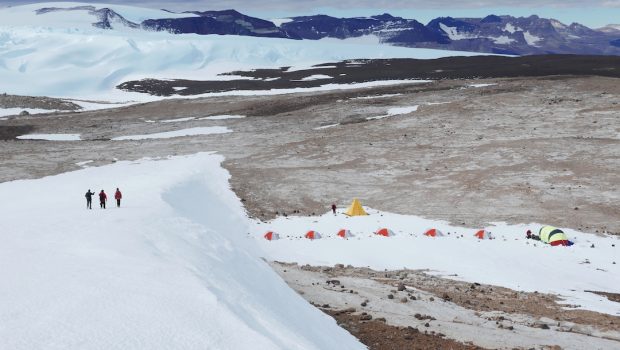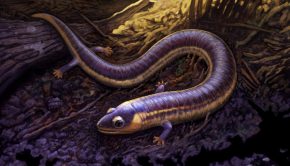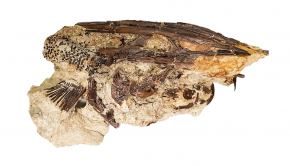Episode 79: Late Devonian Vertebrates
The transition of fins to limbs is one of the most significant in the history of vertebrate evolution. These were the first steps that would eventually allow tetrapods to go on to dominate so many terrestrial ecosystems. Fossils that help fill the gaps in this crucial time are invaluable, so how do we go about finding them and what happens when we do discover one?
Joining us to give an overview of some of the fossils involved in this transition, and to provide insights into the fieldwork that goes into finding them, is Dr Ted Daeschler, Academy of Natural Sciences of Drexel University.
Podcast: Download (Duration: 28:01 — 39.4MB)
Collecting in Middle Devonian strata of the Aztec Siltstone above Beacon Valley, Quartermain Mountains, Antarctica, in January, 2017.
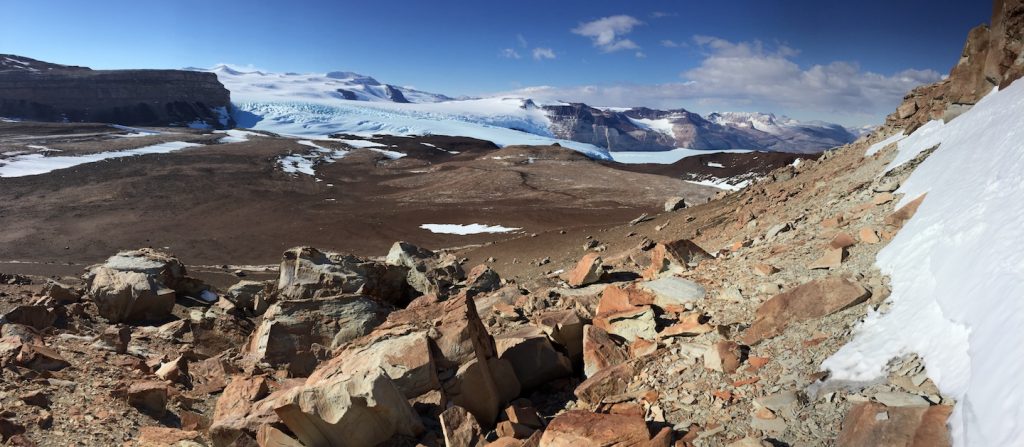
Exposures of the Middle Devonian Beacon Group near Mount Fleming, upper Wright Valley, Antarctica, December, 2016.
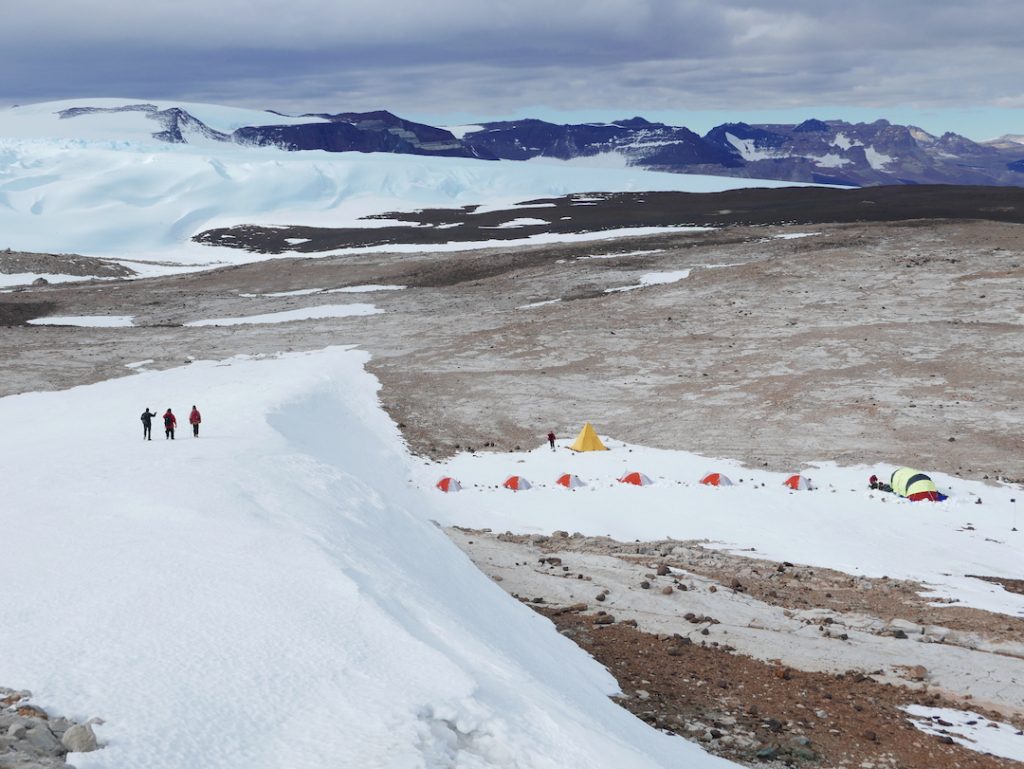
Our team of six spent 12 days at this camp exploring the Middle Devonian Aztec Siltstone, part of the Beacon Group, in the upper reaches of the Wright Valley.
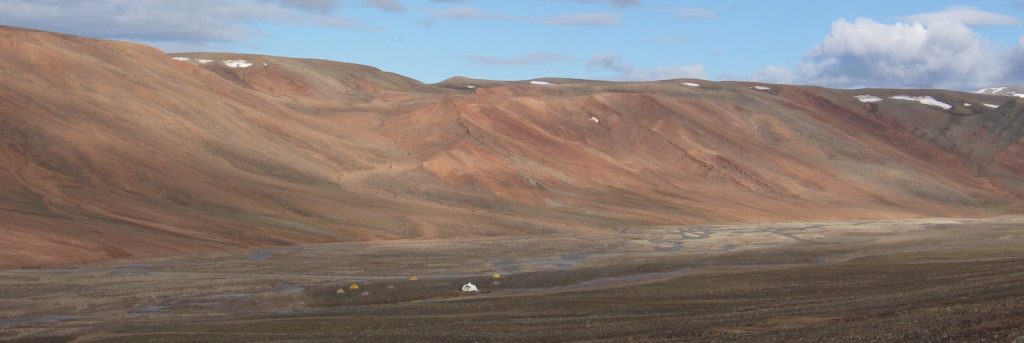
Camp in 2006 surrounded by Late Devonian (Frasnian) strata of the Fram Formation, southern Ellesmere Island, Nunavut Territory, Canada.
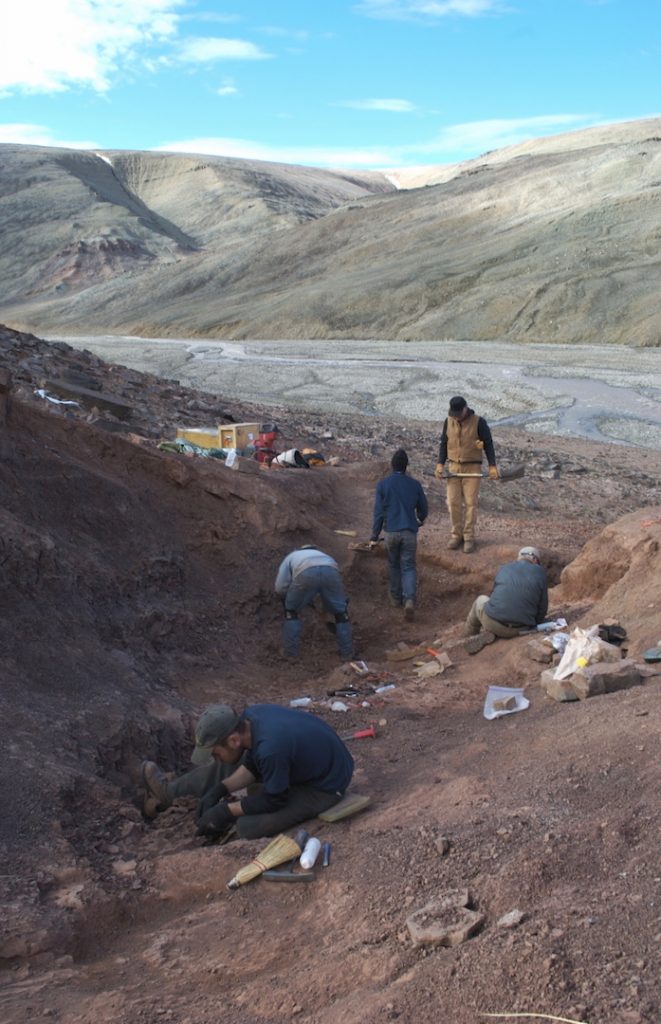
Working in 2008 at the site that produced multiple specimens of Tiktaalik roseae from the Fram Formation (Late Devonian, Frasnian) of southern Ellesmere Island, Nunavut Territory, Canada.
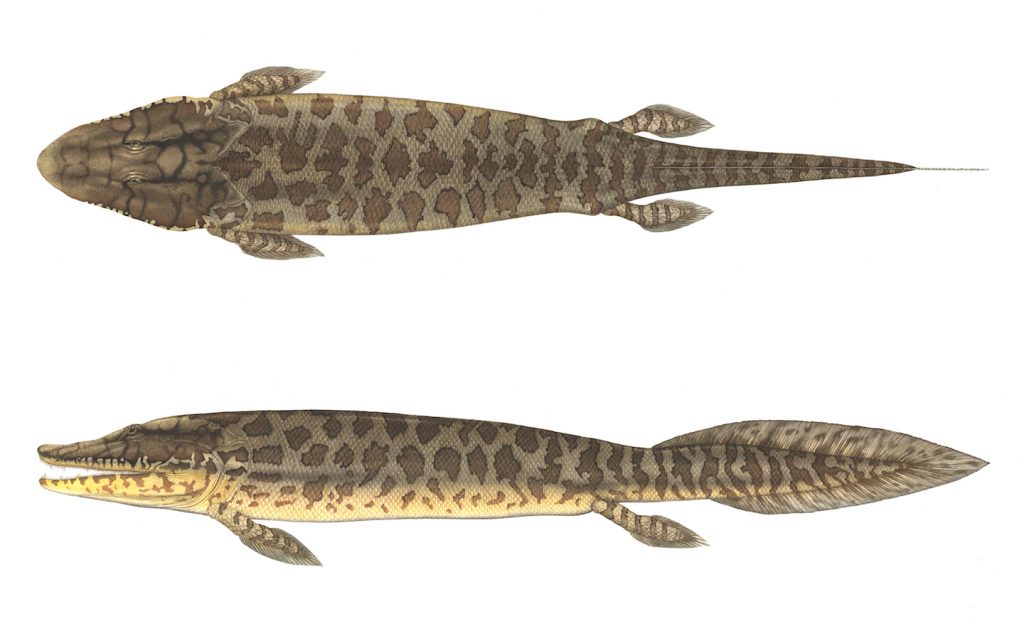
Reconstruction of Tiktaalik roseae. Artwork by Flick Ford using colors and patterns of modern predatory fish living in shallow freshwater ecosystems.
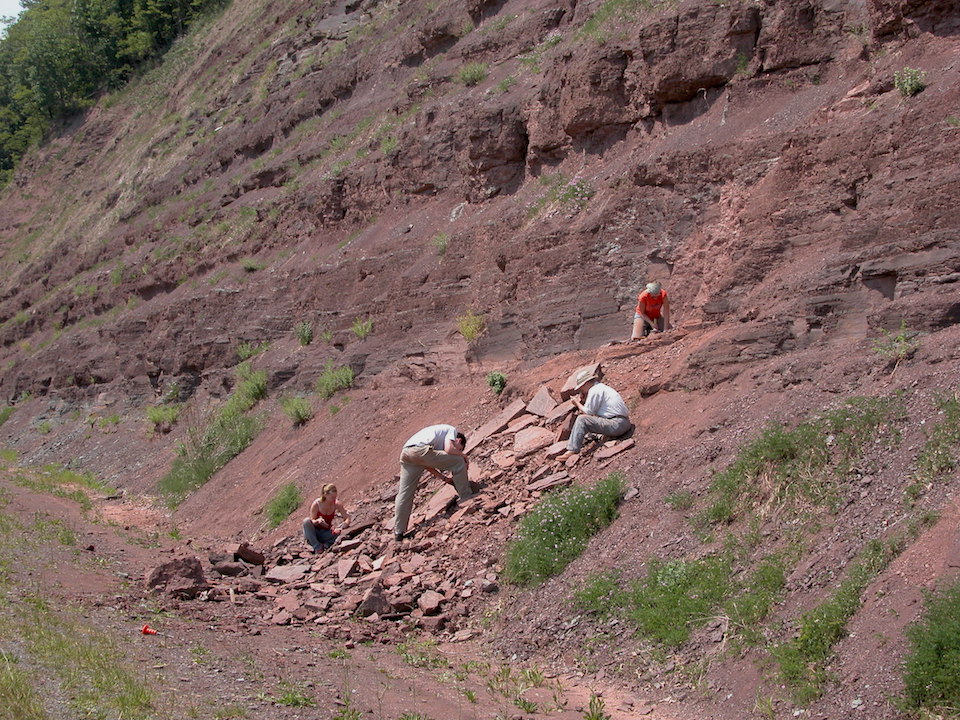
The Red Hill road cut in Clinton County, Pennsylvania, is a very productive Late Devonian (Famennian) fossil site within the fluvial deposits of the Catskill Formation.
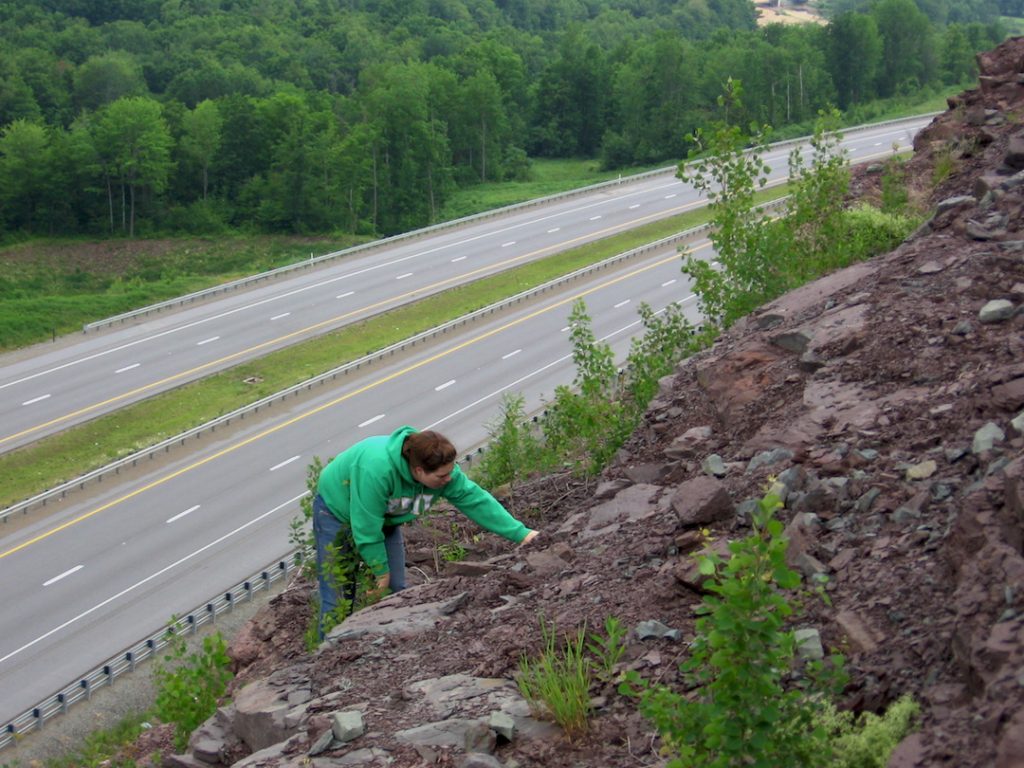
Recent road building projects along the Interstate 99 corridor in northcentral Pennsylvania have opened-up exposures of the Upper Devonian Catskill Formation.
Images credits: Ted Daeschler, Academy of Natural Sciences of Drexel University

